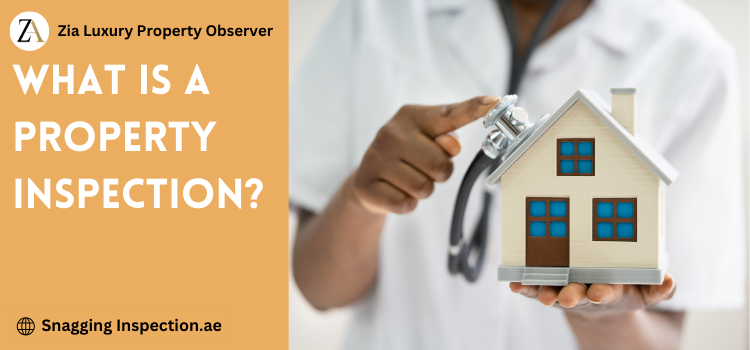Investing in real estate is a significant financial commitment that requires careful consideration and due diligence. A property inspection is a thorough examination of a real estate property’s condition. At Snagging Inspection, we understand the importance of safeguarding your investment by identifying potential building issues before they become costly problems. Here’s a detailed look at what a property inspection entails and its significance.
The Role of the Property Inspector
A property inspector is a trained professional responsible for conducting thorough inspections. They provide a detailed report outlining the condition of the property and any issues found. This report is crucial for buyers, sellers, and property managers to understand the property’s status and make informed decisions.
Snagging Inspection is the leading company in UAE to help the buyers and seller to evlaute the propty value nad find out its hidden issues. To get the right inspection hit the “Book Now” below.
Book your Inspection with us today.
Our expert team is ready to conduct a thorough assessment of your property, identifying any potential issues and providing you with actionable recommendations.
Important key elements of a right property inspection
1. Civil Components: In civil inspection we evaluate the foundation, walls, roof, and other structural elements to ensure they are sound and free from significant defects. This includes checking for cracks, leaks, and any signs of deterioration.
2. Plumbing Systems: In plumbing inspection All plumbing fixtures are examined for proper installation and functionality. We look for leaks, water pressure issues, and potential water damage.
3. Cooling Systems: The efficiency and condition of cooling systems are assessed. This includes checking furnaces, Ac inspection, and related components to ensure they are operational and safe.
4. Electrical Systems: Inspectors review the electrical systems to ensure they meet safety standards. This includes examining the wiring, outlets, switches, and the main electrical panel.
5. Roofing: The condition of the roof is inspected to identify any damage or wear that could lead to leaks or structural issues. This includes checking shingles, gutters, and downspouts.
6. Interior and Exterior: The overall condition of the property’s interior and exterior is reviewed. This includes walls, ceilings, floors, windows, doors, and exterior siding.
7. Insulation and Ventilation: Proper insulation and ventilation are crucial for energy efficiency and indoor air quality. Inspectors check these elements to ensure they are adequate and effective.
8. Fixtures and Fittings: All fixtures and fittings, such as sinks, faucets, toilets, and light fixtures, are checked for proper function and installation
Importance of a Property Inspection
For Buyers
Negotiation Leverage: A property inspection provides detailed information about the condition of the property, helping buyers make informed decisions.
Negotiation Leverage: Inspection reports can be used to negotiate repairs or price reductions with the seller based on identified issues.
Future Planning: Understanding potential problems allows buyers to plan for future repairs and maintenance.
For Sellers
Transparency: Providing a property inspection report can build trust with potential buyers, showing that the seller is transparent about the property’s condition.
Preemptive Repairs: Sellers can address issues before listing the property, potentially increasing its market value and attractiveness.
When do property inspections take place?
During the Home Buying Process
Pre-Purchase Inspection:
Timing: After an offer has been accepted but before the final sale.
PurposeTo identify any issues or defects in the property that could affect its value or require repair. This inspection helps buyers make informed decisions and negotiate repairs or price adjustments with the seller.
Contingency Period Inspection:
Timing: During the contingency period specified in the real estate purchase contract.
Purpose: To ensure that the property meets the conditions agreed upon in the contract. If significant issues are found, buyers can request repairs, renegotiate the price.
For Sellers
Pre-Listing Inspection:
Timing: Before listing the property for sale.
Purpose: To identify and address any issues that could affect the sale of the property. By conducting an inspection before listing, sellers can make necessary repairs and present the property in the best possible condition, potentially increasing its market value.
For Insurance Purposes
Insurance Inspections:
Timing: When obtaining or renewing property insurance.
Purpose: To assess the property’s condition and determine insurance coverage needs. Insurers may require inspections to identify potential risks and ensure that the property is adequately insured.
Post-Claim Inspections:
Timing: After a claim has been made due to damage or loss.
Purpose: To verify the extent of the damage and determine the validity of the insurance claim. This helps the insurer process the claim and decide on the payout.
Safety Risks
Health Hazards:
Mold and Contaminations: Unchecked moisture problems can lead to mold growth, which poses serious health risks. Contaminants like asbestos and lead can also go undetected without proper inspection.
Insect Infestations: Termites and other pests can cause extensive structural damage, compromising the safety of the building.
Electrical and Gas Hazards:
Faulty Wiring: Electrical issues can pose fire hazards, while gas leaks can lead to explosions and health dangers from carbon monoxide poisoning.
Financial Risks
Unexpected Repair Costs:
Hidden Damages: Without an inspection, you might overlook significant issues like a cracked foundation, roof damage, or faulty plumbing fixtures, leading to costly repairs after purchase.
Decreased Property Value: Unidentified problems can reduce the property’s value, making it a poor investment and difficult to resell at a desirable price.
Insurance Issues:
Claim Denials: Insurers may deny claims for pre-existing conditions that were not documented in an inspection report, leaving you to cover repair costs out of pocket.
Higher Premiums: Properties with undisclosed issues may be seen as high risk, leading to higher insurance premiums.

